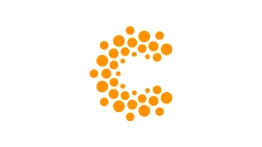

In an era where healthcare affordability is a pivotal concern, the financial burdens insured Americans face in the workplace are becoming increasingly evident. Despite the common perception that health insurance is a panacea for all healthcare-related financial woes, many continue to grapple with substantial out-of-pocket expenses. These costs, ranging from deductibles to co-payments and non-covered services, can accumulate, placing a significant financial strain on individuals and families alike.
The Hidden Financial Struggles of Insured Employees
insured Americans face Insured Americans frequently encounter out-of-pocket expenses that can be financially crippling. The costs add up quickly, leaving many in a precarious financial situation, from deductibles that must be met before insurance kicks in, to co-payments for each visit and prescription.
The Impact of High Deductibles
High-deductible health plans (HDHPs) have risen in popularity, touted for their lower monthly premiums. However, they come with a catch: individuals must pay a significant amount out-of-pocket before their insurance begins to cover healthcare costs. This can deter employees from seeking necessary medical care, fearing the financial repercussions.
The Burden of Non-Covered Services
Adding to the financial strain, insurance policies do not fully cover many essential healthcare services. Mental health services, certain prescription medications, and alternative treatments often fall into this category, forcing individuals to bear the cost. This reality can be particularly harsh during times of vulnerability when these services are most needed.
Individual Strategies to Manage Healthcare Expenses
To combat these financial challenges, employees can adopt several strategies. Health Savings Accounts (HSAs) allow for pre-tax dollars to be set aside for qualified medical expenses, reducing the overall tax burden and healthcare costs. Being wise about seeking out-of-network care and advocating for cost transparency from healthcare providers can also help manage expenses more effectively.
Rethinking Healthcare Support: The Role of CrowdHealth
In the face of these challenges, innovative solutions like CrowdHealth are emerging as pivotal players in redefining healthcare support. CrowdHealth, leveraging community and technology, offers an alternative that transcends traditional insurance limitations. It unites individuals to share healthcare costs directly, reducing the financial burden on each member and fostering a sense of community.
How CrowdHealth Complements Traditional Insurance
For those grappling with high deductibles, copayments, and non-covered services, CrowdHealth can serve as a complementary solution. It can cover unexpected or excessive out-of-pocket expenses that often deter individuals from seeking necessary medical care. By sharing in the collective healthcare costs, members can alleviate the financial strain, ensuring that financial constraints do not impede access to essential services. Moreover, CrowdHealth can support services that traditional plans may not cover, providing a broader safety net. Unlike traditional insurance, which can be complex and opaque, CrowdHealth offers a straightforward and transparent approach, giving members clear insights into their contributions and their impact.
In conclusion, while traditional insurance models offer some level of protection, they often fall short of providing comprehensive financial relief for many insured Americans. Innovative solutions like CrowdHealth represent a step towards a more inclusive, supportive, and flexible healthcare system that acknowledges and addresses the diverse needs of the American workforce. By complementing existing coverage and empowering individuals with more control over their healthcare finances, CrowdHealth is paving the way for a future where financial struggles do not hinder access to necessary medical care.
FAQs







